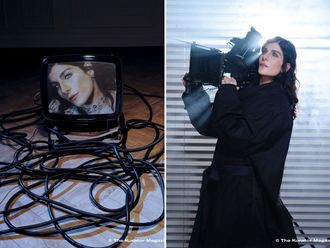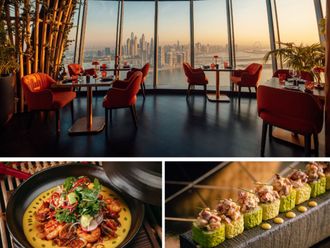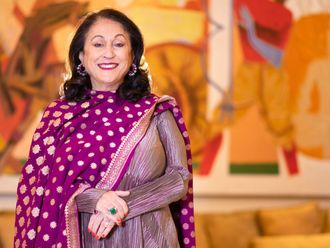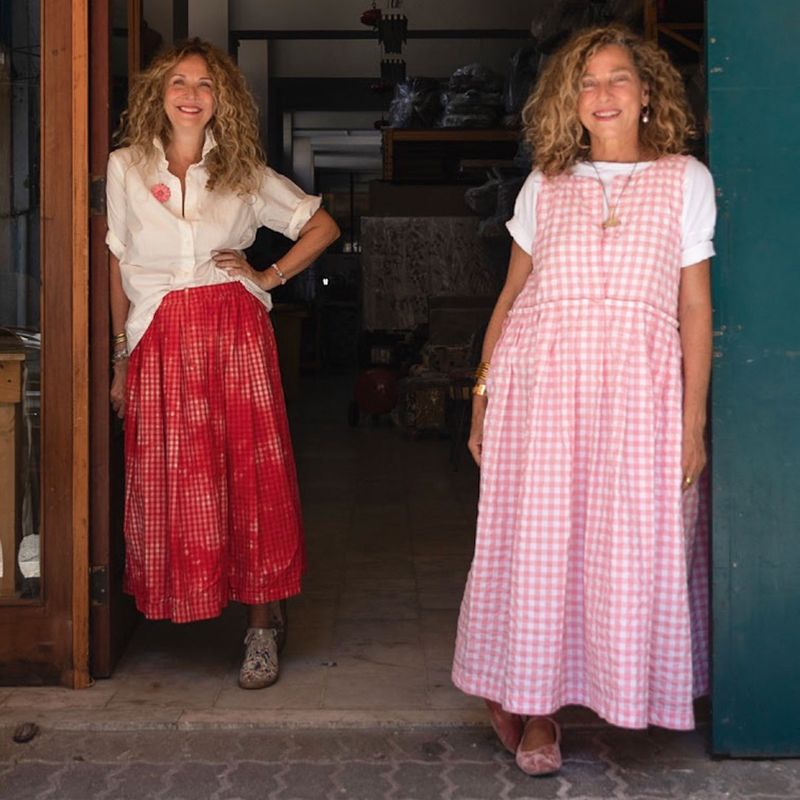
Have you ever met furniture with a personality? If you’re in the presence of a BOKJA creation, you’ll know what I mean. At the Beirut-based design studio, elaborate aesthetic fantasies come to life through furniture and fashion that are akin to mosaics, piecing together diverse elements that joyfully coexist on the canvas. They’re real conversation pieces—from the dainty vanity chair named Sawfar dressed in a ruffled printed skirt, to the handsome Eames à la Bokja chair that wears textiles sourced from places like Samarkand, Aleppo and Istanbul.
Founders Huda Baroudi and Maria Hibri are the design polymaths behind these personable objects, who neatly combine the values of craftsmanship, care, passion and expertise to weave a multistrand narrative.
“BOKJA’s signature is its assemblage aesthetic,” says Huda. It brings together textile fragments of a time and place and situates them in unusual arrangements to communicate a unified message. The integrity of each piece is upheld as it’s connected, layered and ultimately juxtaposed.”

This joyful coming together of disparate surfaces magnifies each component, creating a rich and unexpected visual language that blends the design duo’s individual aesthetic vocabularies.
While Huda has spent her life collecting fabrics from the Silk Road, Maria is an expert in sourcing antiques. “The way we work together is like pas de deux—it’s a dynamic interchangeable practice where we both build on each other’s ideas,” shares Huda.
BOKJA has stretched well into the design stratosphere, having been part of coveted platforms like Milan’s Salone del Mobile (2008) and Institut du Monde Arabe in Paris, where it ran a solo show featuring its Arab Fall and Arab Spring tapestries in 2012. It’s now returning to the coveted Dubai Design Week this year for a third time. “BOKJA has participated at the fair twice over the last eight years and our experience was meaningful both times. We had been planning since a while to be a part of the fair again,” notes Maria.
“We have representation in the Emirate now and Dubai Design Week is the perfect platform to present our latest work,” she adds, referencing that the brand is now available at THAT Concept Store at Mall of the Emirates. For Dubai Design Week’s upcoming iteration, BOKJA is working on a deeply contemplative installation in the form of—get this—a boxing ring.
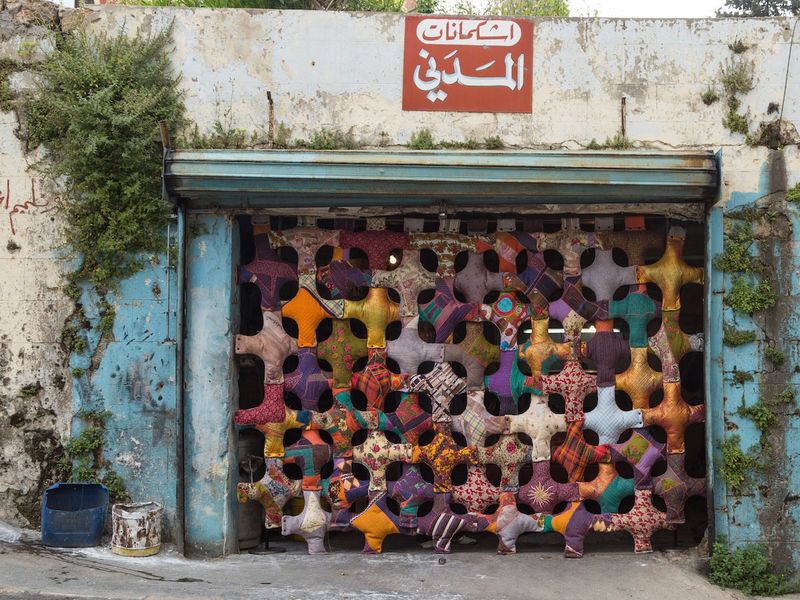
“We’re asking people to stop and engage in a conversation on some of the most pressing issues of today. Let’s talk about the weather, air our opinions, and agree to disagree on a disjointed assemblage of items raised on a boxing ring,” states Huda.
It’s a quintessential BOKJA creation that invites the spectator to engage and answer grand questions epitomising global issues, like climate change. Bedecked with natural iconography on the brand’s signature textiles, the boxing ring will feature a surrealist depiction of a punching bag, packed and loaded to signify the topics at hand. A sketch shows that Einstein’s words, “Creativity is intelligence having fun” will cloak the installation, accentuating its playful spirit.
“It evokes a happy and colourful mood that belies the underlying seriousness of the issues we’re presenting,” Huda notes. She stresses the importance of platforms like Dubai Design Week for local creatives, as they provide the chance for a dialogue between them and the visitors. “Designers will definitely benefit beyond their participation because fairs create awareness and allow them to be remembered if they play their cards right.”
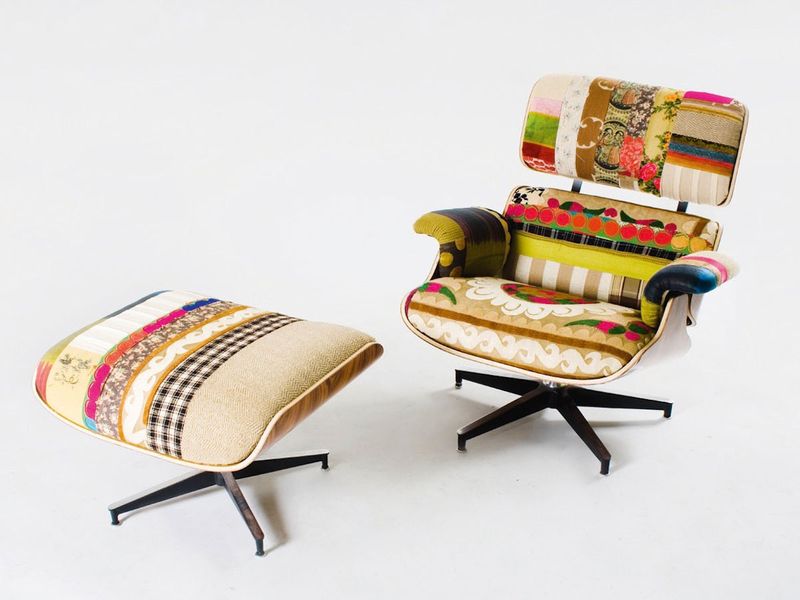
With an eye to scale, colour and pattern, BOKJA offers a mixed bag of design that’s satiable for a global audience and reflects on the common thread between the creative palates of Lebanon and the UAE. “Many Lebanese designers have relocated to the UAE and are working with retailers here. There’s an obvious synergy between the two countries that’s so important. Dubai has become a melting pot of different cultures, and the Lebanese design scene has always been open to the happenings of the world. The two dance well together,” Maria comments. Huda and Maria have been breathing life into furniture pieces that they scavenge from antique stores and flea markets. “We collect obsessively,” says Huda. “We constantly filter through a surplus of ancient and new textiles from the region and across the world.” They’re now part of BOKJA’s archives that inform their fabric choices. “We begin with dissecting, distorting and juxtaposing worn-out textiles and combining them with simpler fabrics, extracting snippets of patterns, textures and colours to dress found objects.” The resulting collections are a history book, crossed with an art gallery, crossed with a time machine, with pieces that often go beyond their aesthetic legitimacy to demonstrate socio political, humanitarian or environmental agencies.
Among the brand’s artistic evocations is We Are Tyred (2012), a series of upholstered motor tires in a beguiling assemblage of textiles. This alludes to a form of street protest in Lebanon, where the public demonstrates their frustration by burning tires. “The use of textiles in this street intervention pacifies the political message while maintaining poetic symbolism,” explains Maria. “It’s the very essence of who we are and why we do what we do. Ours is a country of conflict and chaos where we’re deeply rooted, and we feel that it’s our way to communicate and contribute— hoping to be heard and to provoke and shed light.”
The Migration sofa that was exclusively created for Salone del Mobile 2013 is another case in point. It carries rolled-up rugs and bedding on its back with its drawer that resembles a suitcase full of clothes, mirroring the experience it’s named after. “The shift in our aesthetic language occurred in 2011 during the Arab Spring when there was an upsurge in craftspeople migrating to Lebanon,” shares Hoda. “Highly-skilled embroiderers from Kurdistan, Iraq, Syria and Egypt came to our doorsteps looking for work. They came with their old machines, offering the industrious technique of handguided embroidery that was similar to hand embroidery,” she explains. “Most of our growing team of craftspeople is composed of men. This is likely due to the arduous labor involved in operating the machines for long periods of time—a sort of gender blender, twisting the notion of an activity usually assigned to women.”
The BOKJA studio then became a laboratory, exploring various embroidery techniques and using archival textiles for inspiration. “Through a participatory and slow process, we familiarized ourselves with the techniques that the artisans offered, utilizing their potential to create contemporary works,” Maria states. Huda and Maria’s cultural production is also deeply anchored in personal interactions and experiences, like the harrowing 2020 Beirut explosion that sent shockwaves across the world.
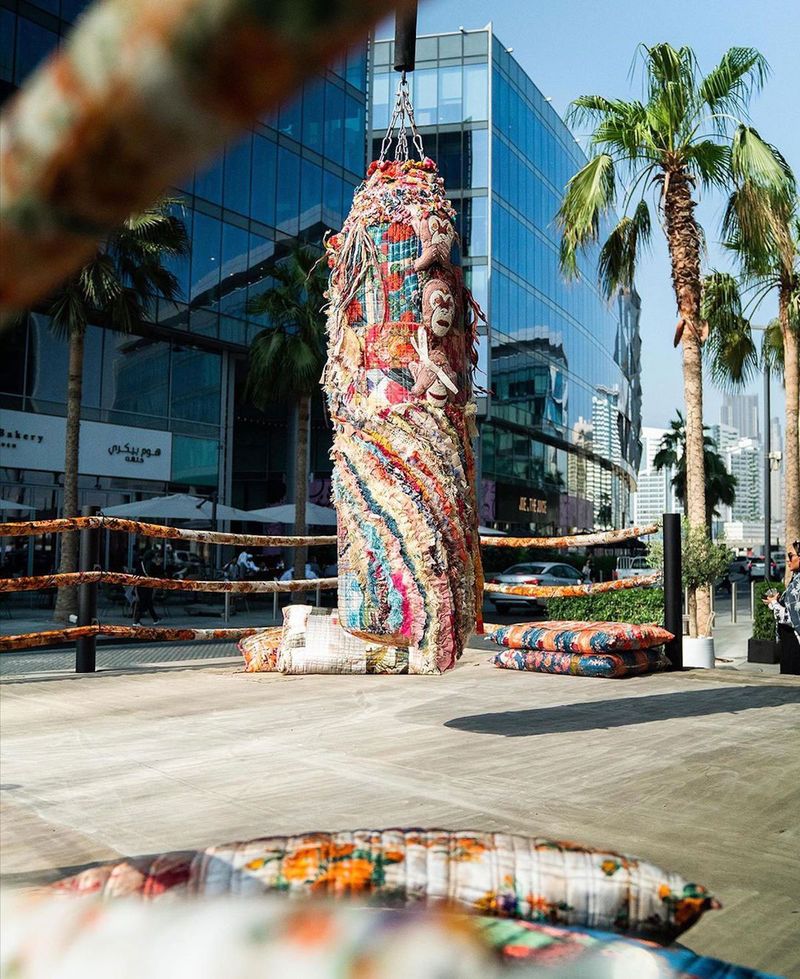
“On 4th August 2020, both our homes, atelier and gallery were severely damaged. The anger paralyzed us,” recalls Huda. “Our work saved us in more than one way. We poured ourselves into fixing people’s damaged furniture. We tried to fix what the explosion destroyed in a second. We also produced the Silence collection because, for once, words failed us. After that came the Sound of Music because optimism is also a must.”
Since its launch in 2000, BOKJA has quickly gained international applause for its distinct creative spirit and message. Among its greatest feats is working with New York-based ABC Carpet and Home in 2004, which provided them with the platform to present their works to global luminaries, including Hillary Clinton, Julia Roberts, Salma Hayek, and Kate Hudson.
Now, BOKJA is working on its Spring-Summer 2023 collection, including wallpaper and a line of upholstery fabric in the brand’s signature assemblage technique, all of which will follow the theme of fragility.
Huda shares, “For us, the future is now. As an engaged, actively reactive brand, we’d love to create awareness about issues that are dear to our hearts and keep on advocating for more mindfulness and empathy.”


